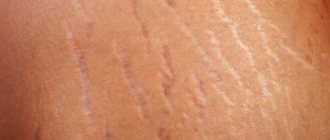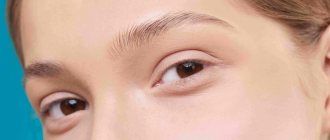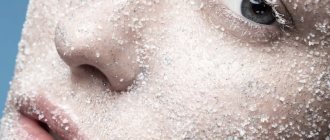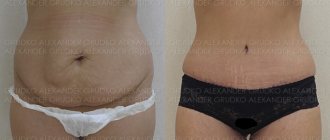The 1nep.ru portal has been guarding the delicate balance between theory and practice for 10 years now, authors and experts write articles and publish breaking news, the main task is that theoretical calculations should make sense at the fingertips of practicing cosmetologists and dermatologists.
Every day, working with technologies and techniques, cosmetologists think about achieving results using the safest possible methods, and the very fact that our active influence changes the state of the pH of the skin, and as a result, changes the ongoing biochemical processes, sometimes remains outside the brackets of daily actions . And this is an important mechanism that also determines the effectiveness of therapy and the need for fine manual adjustment of all the actions of the practitioner.
Let's move, dear reader, towards the hydrogen index.
For many years, marketers in soap advertisements said that the pH of the skin was 5.5, and patients firmly believed in this.
Researcher Giacomoni asked everyone to think about whether this is true?
We in the editorial office have undertaken to collect all the scientific data of recent years on exactly how pH affects the skin and under the influence of what factors it can change.
Let's start with a pH value that best matches healthy skin. What should we strive for “ideally”? Psychotherapists gently wave their hand at us and remind us that there is no norm, but there is a desire for it.
pH value of healthy skin
Variable skin pH values have been noted in the literature. Range – from 4.0 to 7.0 1–3.
It can fluctuate during the day under the influence of various factors.
However, it has been estimated that the "natural" surface pH of the skin averages 4.7, which is below 5. One multicenter study by Lambers, Piessens 2006, which measured the pH of the skin of the forearm before and after showering and using cosmetics, found that the average level pH decreased from 5.12 ± 0.56 to 4.93 ± 0.45 4.
Most studies do conclude that skin with pH values below 5.0 is in better condition than skin with pH values above 5.0 4.
Such indicators ensure better preservation of the barrier function, degree of hydration, and microflora balance 2.
Lard and sweat also have a pH of about 5.5 3]. They create a hyperosmotic environment that is unfavorable for bacterial growth. It has been proven that Staphylococcus aureus grows best at a neutral pH level of 6.
Let us recall that the data for 2022 obtained by Paolo Giacomoni indicate pH figures of 7.0 5.
Information on the bottle
When choosing a shampoo, most people rely on the directions on the label. Some people choose a product based on their hair type: oily, normal, dry. Others are more interested in the effect: for volume, for smoothness, for easy combing, against dandruff. There are very few people who actually look for information on the ph level on the bottle.
But it's not just consumers who are missing out on this metric. Manufacturers often do not indicate this information on the label either. At best, they can write that this product has a balanced ph level. Therefore, taking care of your health and the appearance of your curls, you should pay attention to the products of the brand that was not lazy and took care of determining the ph level, and also indicated the composition of the shampoo and determined what type of hair it is intended for and what effect the hair will have after its use.
pH and life
Acne and pH
In vitro, P. acnes grew well at pH values between 6 and 6.5, but growth was markedly reduced at pH values less than 67.
One study noted that when using regular soap, which alkalized the skin, the amount of inflammatory elements increased. When the same patients began using soap with acids, by the 4th week of use there was a trend towards a decrease in inflammation 8.
This feature is explained by the fact that P. acnes has lipolytic activity, releasing free fatty acids from the sebaceous glands 9, 10. Some free fatty acids exhibit antibacterial activity against gram-positive bacteria and stimulate the expression of the antimicrobial peptide hBD-2 in sebocytes 11. This peptide, in in turn, has pH-dependent antimicrobial characteristics and is active in an acidic environment 12.
However, it is still unknown whether the incidence of acne is related to increased skin pH. There is only one study by Prakash et al. showing a positive correlation 13. The authors measured facial skin pH in 200 acne patients and 200 healthy controls: the mean pH value in the control group was within the normal range and increased significantly in acne patients.
Other studies have not found such a clear correlation. Holland and Cunliffe 14 suggested that the pH of comedones and the normal skin surface are the same. Measurements by Yoon et al. 15 did not correlate with the number of lesions in either sex (sample of more than 500 participants).
A study by Kim et al. 16 showed that in 37 patients with acne compared with 47 healthy controls, no difference in skin surface pH was found. The authors state that the pH level was within the normal range of 5.4 to 5.9.
Rosacea and pH
A study of pH in patients with papulopustular rosacea found that it was more alkaline compared to healthy patients.
In addition, pH had an inverse relationship with skin hydration. Patients with facial rosacea often experience impaired epidermal permeability, which leads to subjective sensations such as burning or itching.
To maintain the integrity of the epidermis, the pH must be acidic to inhibit the activity of enzymes that trigger the inflammatory response. In particular, the enzyme kallikrein 5 has higher expression in the epidermis of patients with rosacea 17 and is negatively correlated with the level of stratum corneum hydration 18. A more alkaline skin surface in patients with PPR may potentiate inappropriate ceramide production and increase enzyme activity, reducing stratum corneum hydration and worsening dysfunction of the epidermal barrier 19, 20.
Anatomical site and pH
Comparing data from different anatomical sites can often produce conflicting results. The composition of the skin surface varies depending on hygiene habits and body area.
However, it is generally accepted that skin pH is relatively stable in different areas of the body, with the exception of areas with high humidity: axillary, groin area (see Table 1)
. Here the pH is slightly higher than in other areas of the body 21.
Some studies link this to sebum secretion 22. For example, high sebum content on the forehead of a patient with acne vulgaris may artificially affect the pH measurement. However, such a connection does not apply to the back, most likely due to lower sebum secretion in this area of the body 23.
Sebum production is higher in men than in women 24.
When measured on the forehead, temples and forearms of women 25, no differences in skin pH were found. In the armpits and areas supplied by apocrine glands, the pH was less acidic or even neutral26.
Table No. 1.
pH level of human skin in some areas (adapted from Farage 2022 21)
| Plot | pH value |
| Forehead and cheekbones | 4,0 – 5,5 |
| Nose | 4,0 – 7,0 |
| Forearm | 4,1 – 4,2 |
| Wrist | 5,56 – 5,96 |
| Shoulder | 5,8 – 6,0 |
| Labia minora | 5,41 |
| Labia majora | 5,80 |
Age and pH
Changes in pH levels begin postnatally. Experimental studies of infants, young children and the elderly. Vischer et al. reported relatively neutral surface pH values in newborns, decreasing to approximately 5.5 during the first 4 days after birth. These data were confirmed by Yosipovitch et al., who recorded an increase in pH value of 7.08 with a significant decrease by the second day. Heger and Enzmann found a decrease in surface pH of 0.3 to 1.1 units in a group of 202 healthy full-term infants. Data on skin pH in schoolchildren are heterogeneous. In the 18–60 age group, skin pH remained constant in most anatomical areas. However, the trend is that pH increases with age.
Alkalinization can impair the permeability of the epidermal barrier, the integrity of the stratum corneum, and alter the microbiome. The European Medical Journal, in its review of age-related pH changes, noted that normalizing skin pH levels in older adults using skincare products with a lower pH (eg 4) can improve skin barrier function.
Gender and pH
Most studies show higher facial skin surface pH in women compared to men 27–30. However, in one study of 11 volunteers, women were found to have lower skin surface pH compared to men (Table 2)
31.
Table No. 2.
pH differences by sex (adapted from Barel 2014 31)
| Plot | Women | Men |
| Forehead | 5,4 – 5,8 | 5,1 – 5,5 |
| Shoulder | 5,80 – 5,94 | 6,58 – 6,67 |
| Forearm | 4,8 – 5,8 | 4,3 – 4,7 |
| Wrist | 5,84 | 5,56 |
| Back | 5,43 – 5,73 | 4,96 – 5,12 |
Women
Forehead skin pH was significantly lower in ages 0–12 years than in older age groups. The pH of the skin surface on the forearms in women did not differ by age group.
Skin pH on the forehead at ages 13–70 and on the forearms at ages 0–12, 36–50, and 51–70 was significantly higher than that of age-matched men.
Skin pH in women aged 13–35 years was higher on the forehead than on the forearm (5.71 vs. 5.40).
Men
The highest skin pH on both the forehead and forearm was found in the group over 70 years (there were no differences in men aged 0–12, 13–35 years), 36–50 and 51–70 years 30.
Skin type and pH
It has been demonstrated that people with dark skin types above Fitzpatrick IV–V had lower surface pH than people with white skin. It was concluded that this feature was associated with better barrier function compared with that of fair-skinned individuals33.
Experiments demonstrated that epidermal barrier function and stratum corneum integrity are regulated by changes in pH, and subjects with dark skin had a more acidic pH value (forearm pH 4.6 ± 0.03 vs. 5.0) 32 Therefore, Gunathilake et al. suggested that pH-regulated mechanisms may underlie these functional differences.
Skin pH and hormones
Androgens, particularly testosterone, have been shown to slow epidermal barrier repair, while estrogens and antiandrogens such as flutamide have the opposite effect. Testosterone may influence the creation of an acidic skin pH as it acidifies the stratum corneum 13, 34.
How to determine acid-base balance
You can roughly determine the shift in PH balance using certain signs. If there is a shift to the more acidic side, symptoms appear:
- excessive dryness, feeling of tightness and itching;
- excessive peeling;
- tendency to irritation and redness;
- feeling of greasy skin after cleansing and/or using moisturizers;
- increased sensitivity when using various cosmetics.
There are also various tests with questions and suggested answers. For example, the nature of changes in the skin after cleansing, the number of facial moisturizers throughout the day, the nature of the reaction to decorative cosmetics, the frequency and regularity of redness and peeling, the time of day at which the severity of wrinkles increases, changes in fat content and the appearance of inflammatory reactions, the frequency of swelling and shine of the skin. Based on the sum of the points of the corresponding answers, one of the options for the acid-base state is determined - optimal, high or low acidity.
In dermatology offices and beauty salons, portable non-invasive electronic testers with a colorimetric indicator or glass electrode are used to determine the acidity level in numerical terms - ph meters - to determine the pH of dry skin. An example of such a device is the “HI 98110 Skincheck” hair and skin tester.
What causes the pH balance of the skin to change?
The acid-base balance can change under the influence of the following factors:
- prolonged exposure to moisture and ultraviolet radiation;
- significant and sudden changes in ambient temperature;
- skin diseases such as acne, dermatitis, mycoses (leaching) or psoriasis (oxidation);
- violation of the diet, expressed in a decrease in the amount of fatty acids;
- frequent use of alkaline detergents without additional compensation;
- sweating;
- smoking and alcohol abuse;
- use of antibacterial compounds;
- course intake of vitamins and antioxidants.
To confirm the declared pH level in detergents and cosmetics, you can use special test strips.
Optimal acidity of shampoo: rules of choice
First you need to determine the acidity of the scalp. Dermatologists use a special device for this purpose that accurately measures pH. This indicator can be determined conditionally on your own, since in oily hair it is alkaline, and in dry hair it is acidic. That is why shampoo with neutral pH 5.5 can only be used for normal healthy curls.
If the strands are oily, even such a neutral product can aggravate the situation, so it is better to give preference to an acidity of 4 - 4.5 pH.
Alkaline products help open the hair cuticle scales, which is why these products are used during coloring and other aggressive cosmetic procedures. If you do not subsequently use a product with an acidic formula, the curls will be dry, split ends and fragility will appear. Also, after dyeing, it is important to use acid masks to close the cuticle scales in order to keep the dye inside and maintain the brightness of the color for as long as possible.
In the table we suggest you familiarize yourself with the different types of acidity of shampoos and their properties
I am what I eat
Another important point that helps restore the balance of the scalp is nutrition. No, not nourishing the skin with various compounds, but regular food. It also affects the acid-base balance, because any product during processing releases either alkali or acid.
To increase the positive acid load, the diet should be diversified with foods containing amino acids in proteins, as well as organic carbohydrates and fats. The focus is on meat and other animal products. If leaching of the medium is required, organic magnesium, potassium and calcium salts, as well as herbs, fruits and vegetables, are added to the food. Legumes and nuts have a neutral background; they maintain an optimal pH balance of the skin.
Even with genetically determined disorders of the acid-base balance, you can maintain its optimal value with the help of nutrition and scalp care products. The main thing is not to neglect the advice of specialists and promptly seek help from specialists, for example, dermatologists at the Clauderer trichological center in Moscow.











